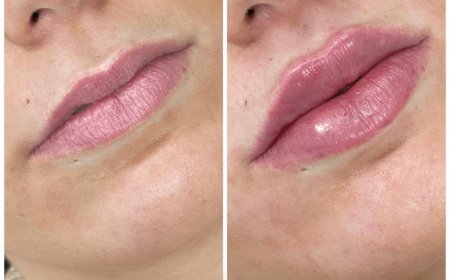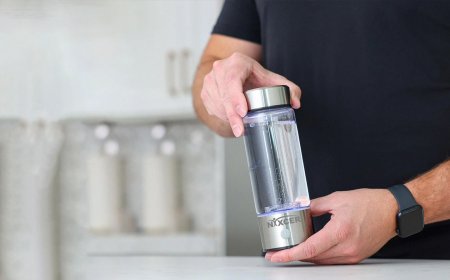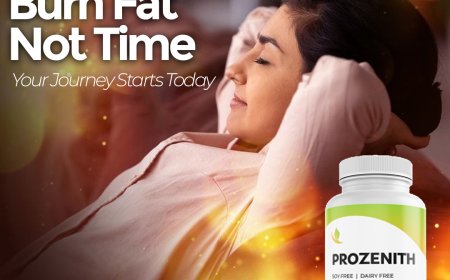Teeth Cleaning and Whitening: How They Really Differ
Understand the true difference between teeth cleaning and whitening. Keep your teeth healthy and bright with the right professional care.

Most people want a bright, healthy smile, but theres often confusion about what professional cleaning and whitening really do. They sound similar, but theyre not interchangeable treatments. Cleaning focuses on oral health and preventing disease, while whitening is purely cosmetic, aimed at boosting your smiles brightness. Understanding the difference isnt about technical jargon; its about knowing what your teeth truly need. With the right guidance, you can get both treatments in a way that suits your goals, comfort, and long-term dental health.
Why Professional Cleaning Is Essential
What Happens During a Professional Clean?
Professional teeth cleaning, often done by a hygienist, is about keeping your mouth healthy by removing the things you cant manage at home. Even the best brushing routine cant get rid of all plaque, especially in tricky spots.
Yourdentist in Cambridgewill typically refer you to a hygienist for a thorough clean. The process includes:
- Scaling:Removal of tartar above and below the gum line.
- Polishing:Smoothing the tooth surface so plaque cant stick as easily.
- Fluoride application if needed:Strengthens enamel and reduces decay risk.
This is all about prevention. Neglected plaque can lead to gum disease, bad breath, and even tooth loss.
Health Benefits of Professional Cleaning
Professional cleaning doesnt just make your teeth look tidy its a critical part of oral health:
- Gum disease prevention:Gum disease is one of the leading causes of tooth loss. Early stages like gingivitis can be reversed with cleaning.
- Cavity prevention:By removing plaque, you lower the chance of cavities forming.
- Fresh breath:Plaque and bacteria are the main culprits behind bad breath.
- Overall health connection:Gum disease has been linked to conditions like diabetes and heart disease. A cleaner mouth can mean a healthier body.
Your dentist can also spot early signs of trouble during cleaning sessions, from tiny cavities to signs of oral cancer.
What Teeth Whitening Really Is
How Whitening Works
Now lets talk about whitening. Unlike cleaning, it isnt about health, it's cosmetic. Whitening uses safe bleaching agents, usually hydrogen or carbamide peroxide to break up and lighten stains in the enamel. Teeth whitening clinics typically offer:
- In-chair treatments:High-strength gel and special lights to speed up results in about an hour.
- Take-home kits:Custom-fitted trays with lower-strength gel for gradual whitening over 12 weeks.
Its worth noting that whitening only works on natural teeth; it won't change crowns, veneers, or fillings.
Results You Can Expect
You might see teeth become several shades lighter. However:
- Results vary depending on your natural enamel colour and type of staining.
- Not everyone achieves Hollywood white results.
- Lifestyle factors like coffee, red wine, smoking affect how long results last.
Comparing Cleaning and Whitening
Its common to confuse the two, especially because people sometimes see their teeth looking brighter after a clean. But the reasons are different.
|
Feature |
Professional Cleaning |
Whitening Treatment |
|
Purpose |
Remove plaque and tartar; maintain gum health |
Lighten tooth shade by breaking up stains |
|
Tools and methods |
Scalers, polishers, fluoride |
Peroxide gels, LED/UV lights, custom trays |
|
Frequency |
Every 6 months (or as advised) |
Every 1218 months (or as needed) |
|
Oral health impact |
Prevents gum disease and decay |
Cosmetic only; does not prevent disease |
|
Suitability |
Everyone |
May not work on all stains; not for some dental work |
Professional cleaning can make teeth look brighter simply because it removes surface stains and tartar. But real shade lightening comes from whitening.
Why You Should Never Replace Cleaning with Whitening
Its tempting to think: Ill just whiten and skip cleaning! But thats a recipe for trouble.
- Gum disease risk:Whitening doesnt remove bacteria below the gums. Untreated gum disease can lead to tooth loss.
- Patchy whitening:Plaque and tartar block the bleaching gel, causing uneven results.
- Sensitivity issues:Inflamed gums can become more irritated if exposed to whitening gel.
Your dentist in Cambridge will almost always recommend getting a professional clean before whitening.
A Typical Treatment Plan: Cleaning Before Whitening
If youre planning both, heres the usual best practice:
- Start with a clean:Your hygienist removes tartar and plaque so whitening gel can reach all enamel surfaces.
- Wait a little if needed:Let any gum irritation heal before bleaching.
- Whitening treatment:Choose in-chair for speed or take-home trays for flexibility.
- Regular maintenance:Return for cleaning every 6 months to maintain gum health and prolong whitening results.
Mostteeth whitening Cambridgeclinics will insist on this sequence for safety and results.
Benefits of Combining Cleaning and Whitening
Lets break down why this combination works so well:
Health First
- Removes bacteria and buildup
- Protects gums from inflammation
- Reduces long-term dental costs by avoiding disease
Cosmetic Next
- Brightens your enamel
- Removes deep-set stains that brushing cant
- Boosts confidence with a fresher, whiter smile
Sustained Results
- Clean teeth hold whitening results longer
- Regular maintenance reduces need for frequent bleaching
By combining them, you get a holistic approach healthy teeth that look fantastic.
When Whitening May Not Be Right for You
Whitening is generally safe when professionally managed, but its not for everyone:
- Active gum disease:Treat first before whitening.
- Extensive restorations:Crowns and fillings wont change colour.
- Very sensitive teeth:Your dentist may suggest alternatives or lower-strength gels.
A good dentist will explain your options honestly and help you decide.
How to Maintain Results at Home
After investing in professional care, youll want to keep those results looking their best. Try these tips:
- Brush twice daily with fluoride toothpaste.
- Floss or use interdental brushes daily.
- Use a straw for drinks like coffee or cola.
- Avoid smoking.
- Consider occasional whitening top-ups, as recommended.
Your teeth whitening specialist can also suggest the right toothpaste for maintaining brightness without increasing sensitivity.
Video link: Brighter Smiles with Professional Teeth Whitening
FAQs About Cleaning and Whitening
Do I Need Both?
Yes, if you want both health and aesthetics. Cleaning is non-negotiable for oral health. Whitening is optional but popular for appearance.
Does Whitening Hurt?
Some people feel temporary sensitivity. Your dentist can offer tips or gels to manage this.
How Often Should I Have Them?
Cleaning every 6 months; whitening once a year or as needed with touch-ups for staining habits.
Conclusion
At EDC, they believe in a complete approach to caring for your smile balancing health and aesthetics so you never have to choose one over the other. Their team will guide you through professional cleaning to keep your gums healthy, then whitening to give your teeth that confident sparkle. Its not about shortcuts but about doing things properly and personally. When you trust us, you can feel secure knowing your smile is cared for with skill, attention, and genuine dedication to what suits you best.

































